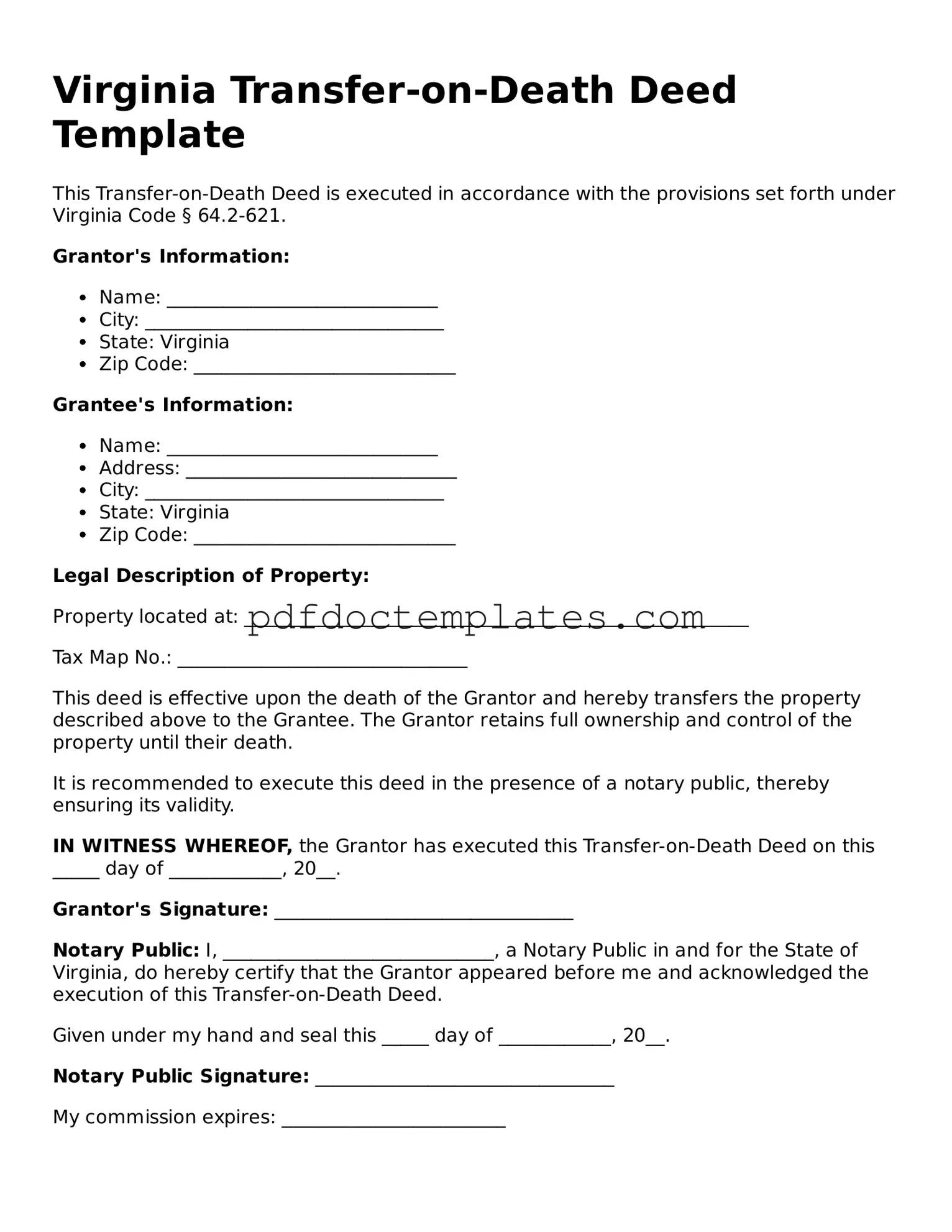Virginia Transfer-on-Death Deed Template
This Transfer-on-Death Deed is executed in accordance with the provisions set forth under Virginia Code § 64.2-621.
Grantor's Information:
- Name: _____________________________
- City: ________________________________
- State: Virginia
- Zip Code: ____________________________
Grantee's Information:
- Name: _____________________________
- Address: _____________________________
- City: ________________________________
- State: Virginia
- Zip Code: ____________________________
Legal Description of Property:
Property located at: ______________________________________________________
Tax Map No.: _______________________________
This deed is effective upon the death of the Grantor and hereby transfers the property described above to the Grantee. The Grantor retains full ownership and control of the property until their death.
It is recommended to execute this deed in the presence of a notary public, thereby ensuring its validity.
IN WITNESS WHEREOF, the Grantor has executed this Transfer-on-Death Deed on this _____ day of ____________, 20__.
Grantor's Signature: ________________________________
Notary Public: I, _____________________________, a Notary Public in and for the State of Virginia, do hereby certify that the Grantor appeared before me and acknowledged the execution of this Transfer-on-Death Deed.
Given under my hand and seal this _____ day of ____________, 20__.
Notary Public Signature: ________________________________
My commission expires: ________________________
